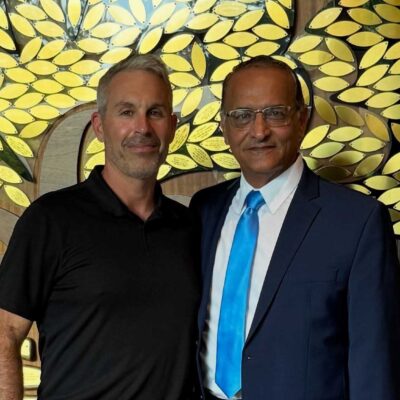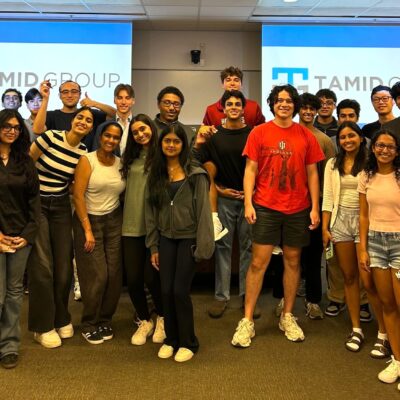Opinion
BEST PRACTICES
Don’t plan for succession. Plan for success.
When organizations talk about succession planning, the conversation almost always centers around people. Who will step in when the current CEO retires? Who will lead the development team if the director leaves? It’s a game of musical chairs, hoping there’s a warm, capable body ready to take the next seat. A name gets slotted in to replace another name; boards feel relief that a vacancy won’t linger.
This mindset, focused narrowly on replacing individuals, often misses the deeper opportunity.

miakievy/Getty Images
Think of it this way: If your best fundraiser resigns, the goal isn’t to hire someone “just like them.” The goal is to ensure that the relationships they nurtured, the pipeline they built and the strategies they refined are documented, transferable and measurable. You’re not replacing a person — you’re replacing their outputs.
Which means that there are better questions we should be asking: What are we trying to preserve when a leader transitions out? Is it their presence and personality, or is it the systems, relationships, insights and impact they’ve cultivated?
The same applies across every department. What processes did the departing operations lead streamline? What innovations did the outgoing program director implement? If your strategy hinges on retaining specific individuals rather than retaining institutional knowledge and replicable results, you’re building fragility into your organization.
This isn’t to downplay the importance of strong leaders. But every strong leader eventually transitions out, whether through retirement, resignation, promotion or crisis. If their departure creates chaos, it’s not their fault. It’s a sign that the organization failed to translate leadership into infrastructure. Outputs, by contrast, can be codified.
Instead of succession planning, we need success planning.
Structural supports
Success planning means asking: What do we want to continue happening, regardless of who is here?
That might include:
- Regular and meaningful donor touchpoints. These shouldn’t rely solely on one person’s memory or personal style. Create a donor stewardship calendar with pre-set outreach dates, templates for personalized messages, and multiple team members assigned to touchpoints so no relationship rests on a single individual. Track these interactions in a customer relationship management (CRM) system so the history and context live with the organization, not the person.
- Smooth onboarding processes for staff and board. A strong onboarding process should be standardized and documented, complete with welcome materials, role expectations, training resources and cultural orientation. This ensures that new hires or board members feel equipped and connected from day one, regardless of who coordinates the process. Embedding peer mentorship or buddy systems ensures knowledge transfer continues even if leadership changes.
- Quarterly program assessments that feed strategic learning. Rather than relying on one leader to review and interpret data, establish a routine schedule for evaluating program outcomes against set metrics. Use consistent tools and reporting formats so assessments are comparable over time. Create a shared review process — ideally involving staff, board, and stakeholders — so strategic learning becomes a collective responsibility, not a singular insight.
- A culture of innovation where experimentation is encouraged. Innovation should be woven into your organizational habits, not dependent on one visionary. Whether you bring in an outside facilitator or do this “in-house,” create standing forums or lab sessions where staff can pitch ideas, run pilots, and share results openly. Involve volunteer leaders if you’d like. Recognize and reward not just successful innovations but also thoughtful experiments, reinforcing that risk-taking is part of the organization’s DNA.
Once you define what must continue, you can build structures to support it — systems, templates, rituals, scorecards, and even internal pipelines of talent ready to step in and carry those outputs forward.
Document the invisible
One of the most overlooked aspects of transition is the invisible capital a leader holds: Informal networks. Cultural cues. Tacit knowledge. If you want to replace outputs, you must first identify what those outputs are. This requires intentional documentation and reflection.
Schedule debriefs with departing staff. Map their relationships and routines. Ask: What have you built that others need to understand? What would break if no one picked it up?
Then go one step further: assign accountability for continuing that output. Not the position—the result. Who will now ensure that major donors feel seen? Who will monitor staff morale? Who will carry forward key community partnerships?
The best leaders don’t just produce results — they produce repeatable results. They create tools, train successors, and build muscle across the organization. They shift from being indispensable to being impactful.
Redefine strong leadership
To succeed at success planning, everyone must embrace the idea that their value lies not in hoarding knowledge or power, but in distributing it.
That’s a cultural change.
It means rewarding staff who document their work and mentor colleagues. It means treating delegation as a form of legacy-building. It means challenging the myth of the irreplaceable leader.
If you want a strong leadership bench, stop focusing on titles. Instead, focus on capabilities and readiness. Who in your organization already thinks strategically? Who manages conflict well? Who builds systems rather than just following them? Success planning elevates people based on their ability to deliver outcomes, not their proximity to power. It also creates space for more inclusive leadership development. If you only groom the next CEO, you miss the opportunity to grow a whole ecosystem of leaders—from emerging voices on the program team to quiet innovators in operations. When outputs are clear, more people can rise to meet them.
If you do success planning well, succession planning takes care of itself.
When roles are designed around results, when systems are in place to carry forward key functions, and when leadership is diffused throughout the organization, then you’re never left scrambling. Whether someone leaves tomorrow or five years from now, your organization remains steady — because it’s built around success, not personality.
Avi S. Olitzky is the president and principal consultant of Olitzky Consulting Group, based in Minneapolis.

 Add EJP on Google
Add EJP on Google










